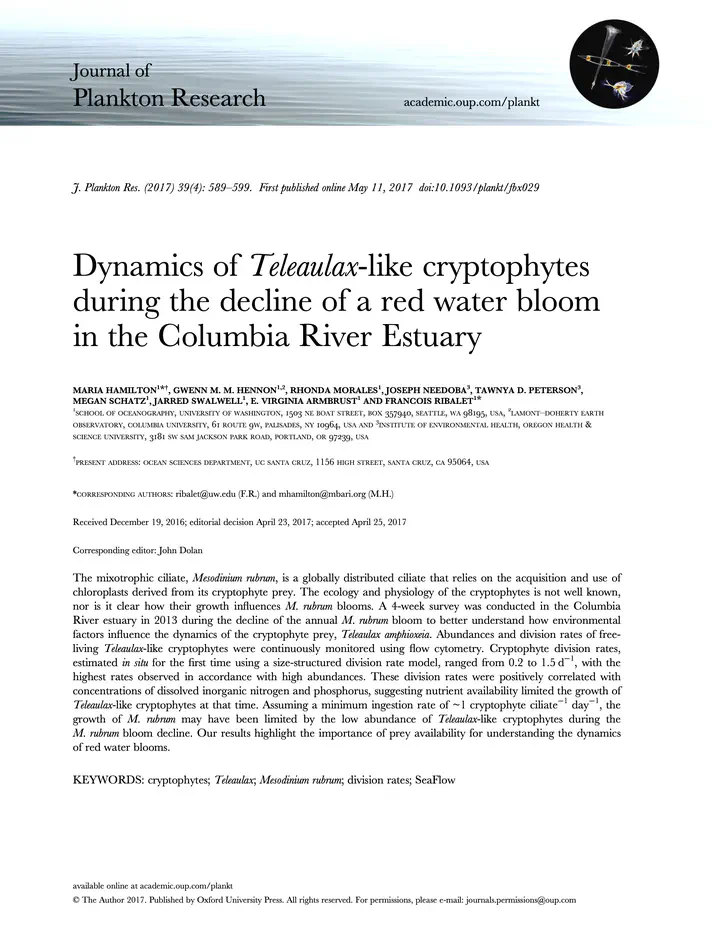Dynamics of Teleaulax-like cryptophytes during the decline of a red water bloom in the Columbia River Estuary

Abstract
The mixotrophic ciliate, Mesodinium rubrum, is a globally distributed ciliate that relies on the acquisition and use of chloroplasts derived from its cryptophyte prey. The ecology and physiology of the cryptophytes is not well known, nor is it clear how their growth influences M. rubrum blooms. A 4-week survey was conducted in the Columbia River estuary in 2013 during the decline of the annual M. rubrum bloom to better understand how environmental factors influence the dynamics of the cryptophyte prey, Teleaulax amphioxeia. Abundances and division rates of free-living Teleaulax-like cryptophytes were continuously monitored using flow cytometry. Cryptophyte division rates, estimated in situ for the first time using a size-structured division rate model, ranged from 0.2 to 1.5 d-1, with the highest rates observed in accordance with high abundances. These division rates were positively correlated with concentrations of dissolved inorganic nitrogen and phosphorus, suggesting nutrient availability limited the growth of Teleaulax-like cryptophytes at that time. Assuming a minimum ingestion rate of ∼1 cryptophyte ciliate d-1, the growth of M. rubrum may have been limited by the low abundance of Teleaulax-like cryptophytes during the M. rubrum bloom decline. Our results highlight the importance of prey availability for understanding the dynamics of red water blooms.